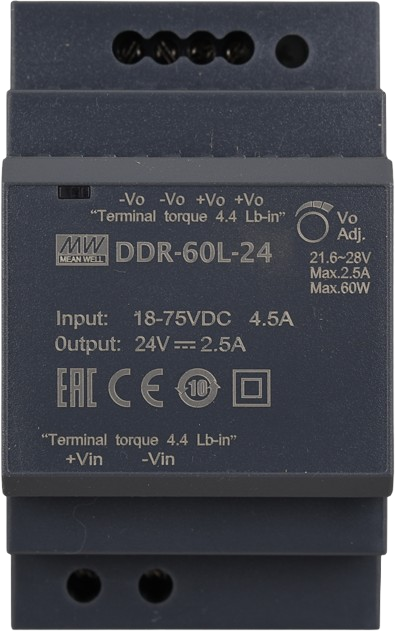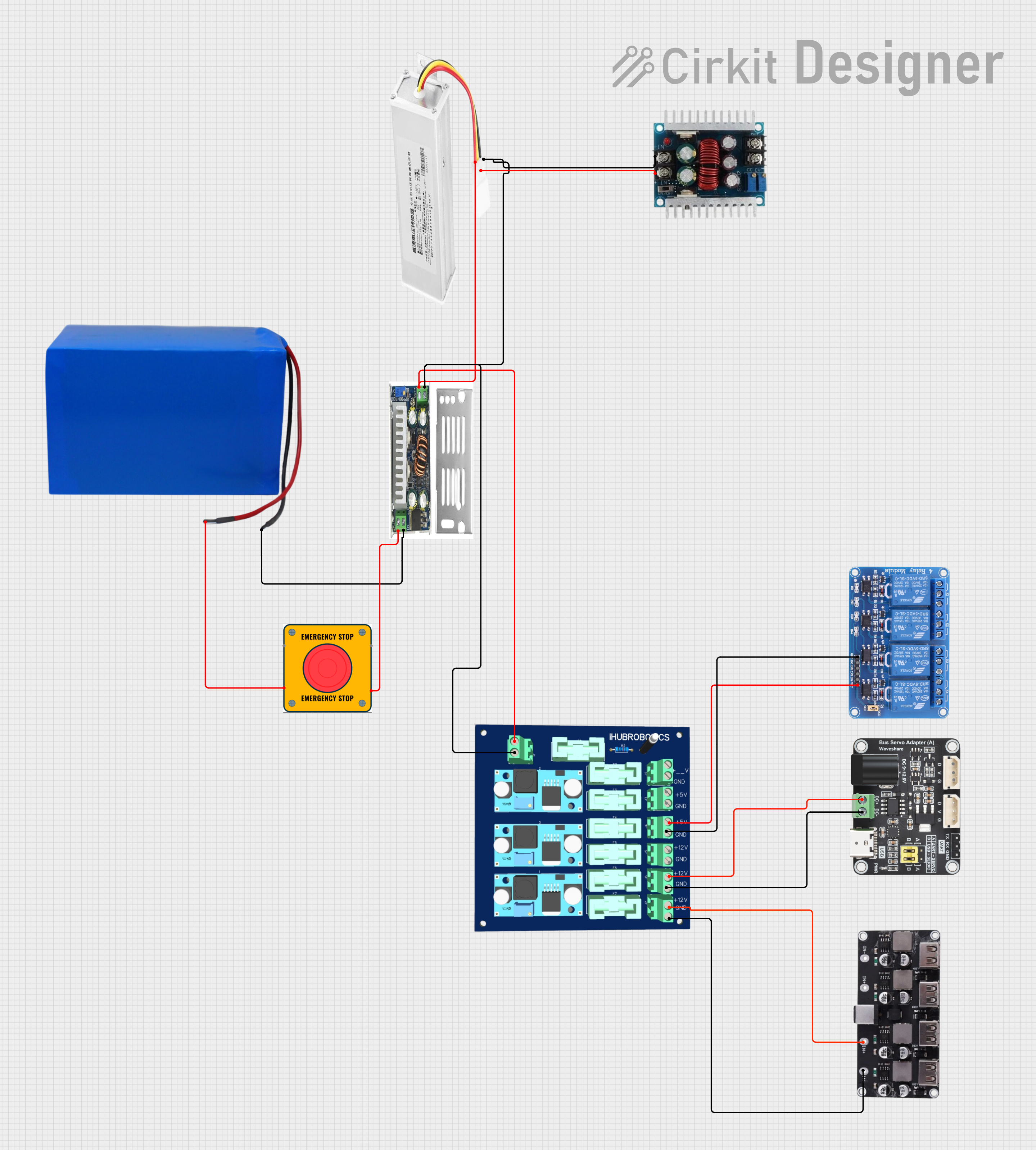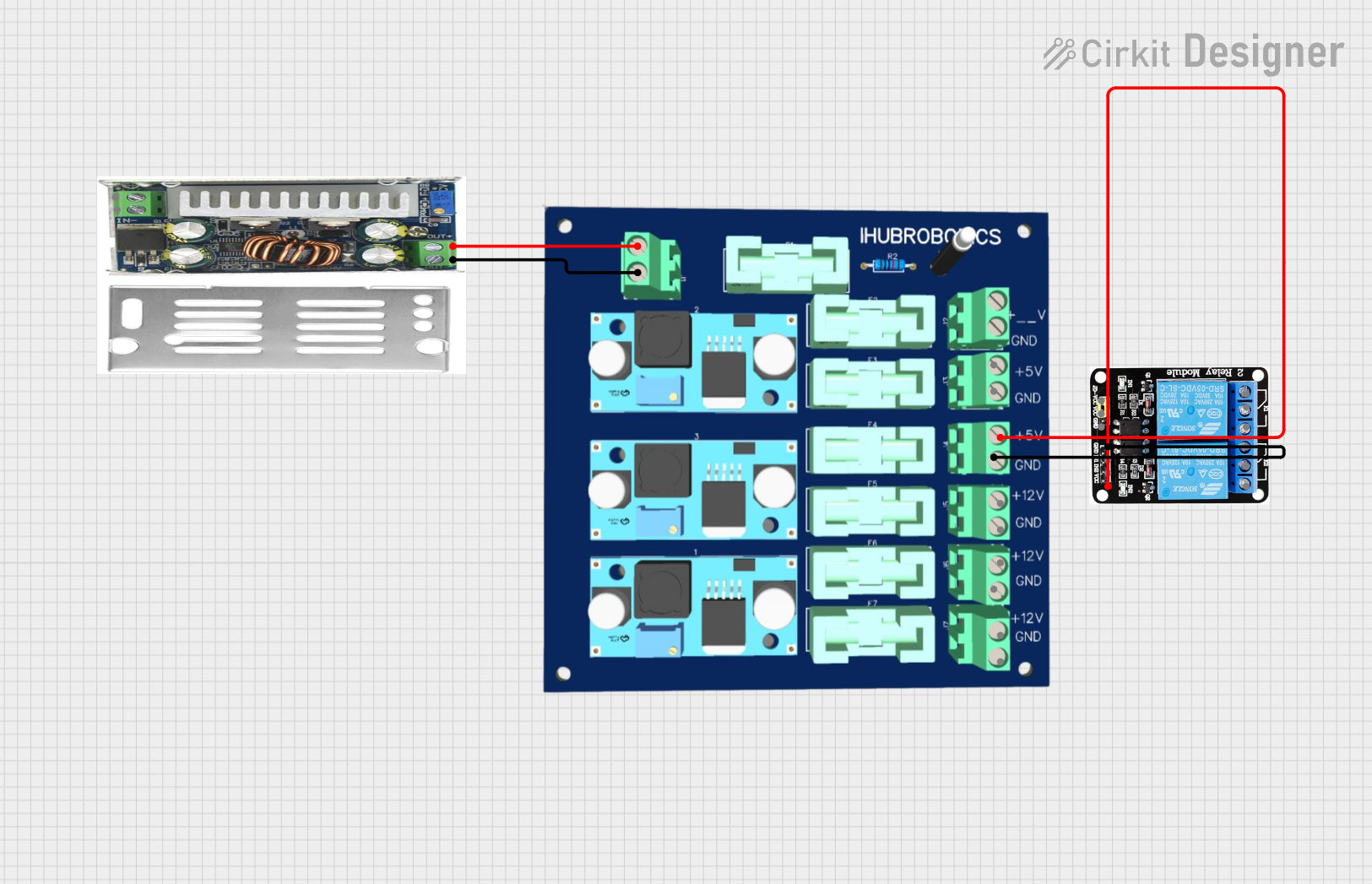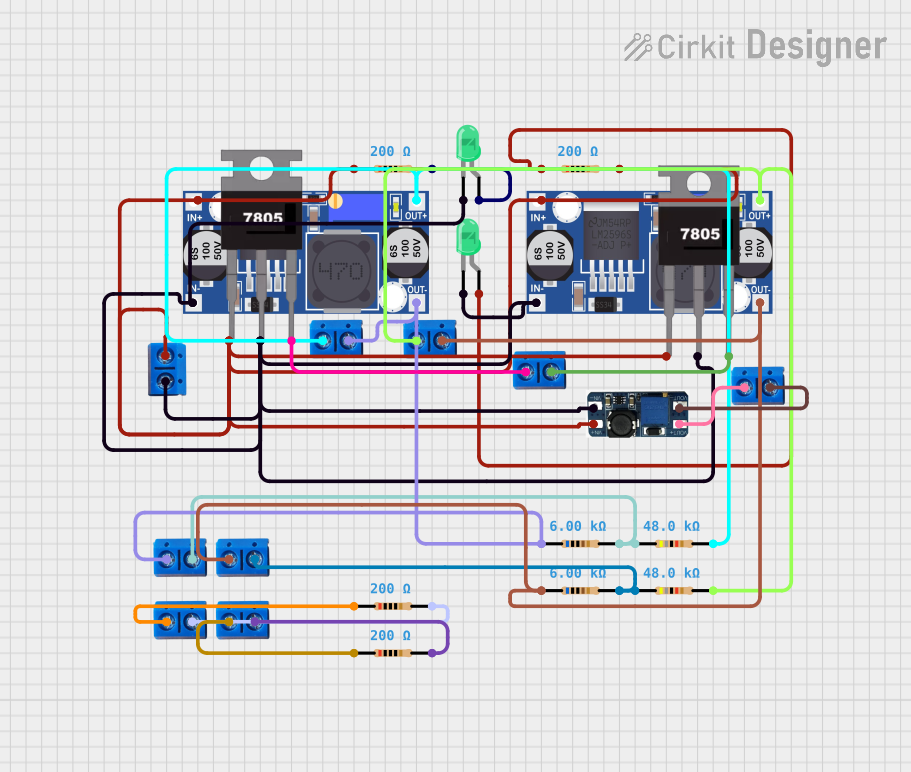
How to Use DC-DC Convertor: Examples, Pinouts, and Specs

 Design with DC-DC Convertor in Cirkit Designer
Design with DC-DC Convertor in Cirkit DesignerIntroduction
A DC-DC converter is an electronic circuit that converts direct current (DC) from one voltage level to another, enabling efficient power management in a wide range of applications. The DDR-60L-24 is a high-performance DC-DC converter designed for industrial, automotive, and embedded systems. It ensures stable voltage output, high efficiency, and reliable operation in demanding environments.
Explore Projects Built with DC-DC Convertor

 Open Project in Cirkit Designer
Open Project in Cirkit Designer
 Open Project in Cirkit Designer
Open Project in Cirkit Designer
 Open Project in Cirkit Designer
Open Project in Cirkit Designer
 Open Project in Cirkit Designer
Open Project in Cirkit DesignerExplore Projects Built with DC-DC Convertor

 Open Project in Cirkit Designer
Open Project in Cirkit Designer
 Open Project in Cirkit Designer
Open Project in Cirkit Designer
 Open Project in Cirkit Designer
Open Project in Cirkit Designer
 Open Project in Cirkit Designer
Open Project in Cirkit DesignerCommon Applications and Use Cases
- Powering embedded systems and microcontrollers
- Voltage regulation in industrial automation
- Battery-powered devices and systems
- Renewable energy systems (e.g., solar panels)
- Automotive electronics for voltage conversion
Technical Specifications
Key Technical Details
| Parameter | Value |
|---|---|
| Input Voltage Range | 9V to 36V DC |
| Output Voltage | 24V DC |
| Output Current | 2.5A |
| Output Power | 60W |
| Efficiency | Up to 92% |
| Operating Temperature | -40°C to +85°C |
| Protection Features | Overload, Overvoltage, Short Circuit |
| Dimensions | 100mm x 32mm x 85mm |
| Weight | 300g |
| Mounting Type | DIN Rail |
Pin Configuration and Descriptions
| Pin Number | Name | Description |
|---|---|---|
| 1 | +V Input | Positive input voltage terminal |
| 2 | -V Input | Negative input voltage terminal (GND) |
| 3 | +V Output | Positive output voltage terminal |
| 4 | -V Output | Negative output voltage terminal (GND) |
Usage Instructions
How to Use the Component in a Circuit
- Input Voltage Connection: Connect the input voltage source (9V to 36V DC) to the
+V Inputand-V Inputterminals. Ensure the input voltage is within the specified range to avoid damage. - Output Voltage Connection: Connect the load to the
+V Outputand-V Outputterminals. The output voltage will be regulated to 24V DC. - Mounting: Secure the DDR-60L-24 to a DIN rail for stable installation in industrial environments.
- Power On: Once all connections are secure, power on the input source. The converter will regulate the output voltage automatically.
Important Considerations and Best Practices
- Input Voltage Range: Ensure the input voltage remains within the 9V to 36V range to prevent damage to the converter.
- Load Requirements: Do not exceed the maximum output current of 2.5A or the power rating of 60W.
- Heat Dissipation: Install the converter in a well-ventilated area to prevent overheating. Use additional cooling if necessary in high-temperature environments.
- Polarity: Double-check the polarity of the input and output connections to avoid reverse polarity damage.
- Protection Features: The DDR-60L-24 includes overload, overvoltage, and short-circuit protection. However, avoid intentionally triggering these protections to ensure long-term reliability.
Example: Connecting to an Arduino UNO
The DDR-60L-24 can be used to power an Arduino UNO by providing a stable 24V output, which can then be stepped down to 5V using a linear regulator or a buck converter. Below is an example of Arduino code to read a sensor powered by the DDR-60L-24:
// Example Arduino code to read a sensor powered by the DDR-60L-24
// Ensure the DDR-60L-24 output is stepped down to 5V for the Arduino UNO
const int sensorPin = A0; // Analog pin connected to the sensor
int sensorValue = 0; // Variable to store the sensor reading
void setup() {
Serial.begin(9600); // Initialize serial communication at 9600 baud
pinMode(sensorPin, INPUT); // Set the sensor pin as input
}
void loop() {
sensorValue = analogRead(sensorPin); // Read the sensor value
Serial.print("Sensor Value: ");
Serial.println(sensorValue); // Print the sensor value to the Serial Monitor
delay(1000); // Wait for 1 second before the next reading
}
Troubleshooting and FAQs
Common Issues and Solutions
No Output Voltage
- Cause: Input voltage is outside the specified range.
- Solution: Verify the input voltage is between 9V and 36V DC.
Overheating
- Cause: Insufficient ventilation or excessive load.
- Solution: Ensure proper airflow around the converter and reduce the load if necessary.
Output Voltage Fluctuations
- Cause: Unstable input voltage or excessive load.
- Solution: Use a stable input power source and ensure the load does not exceed 2.5A.
Short Circuit Protection Triggered
- Cause: Output terminals are shorted.
- Solution: Disconnect the power, check the wiring, and remove the short circuit.
FAQs
Q1: Can the DDR-60L-24 be used with a battery as the input source?
A1: Yes, the DDR-60L-24 can be powered by a DC battery as long as the voltage is within the 9V to 36V range.
Q2: Is the DDR-60L-24 suitable for outdoor use?
A2: The DDR-60L-24 is designed for industrial environments but is not weatherproof. Use an appropriate enclosure for outdoor applications.
Q3: Can I connect multiple DDR-60L-24 converters in parallel?
A3: No, the DDR-60L-24 is not designed for parallel operation. Use a higher-capacity converter if more power is required.
Q4: How do I know if the protection features are activated?
A4: If the output voltage drops or the converter shuts down, it may indicate that a protection feature (e.g., overload or short circuit) has been triggered. Check the input and output connections and reduce the load if necessary.